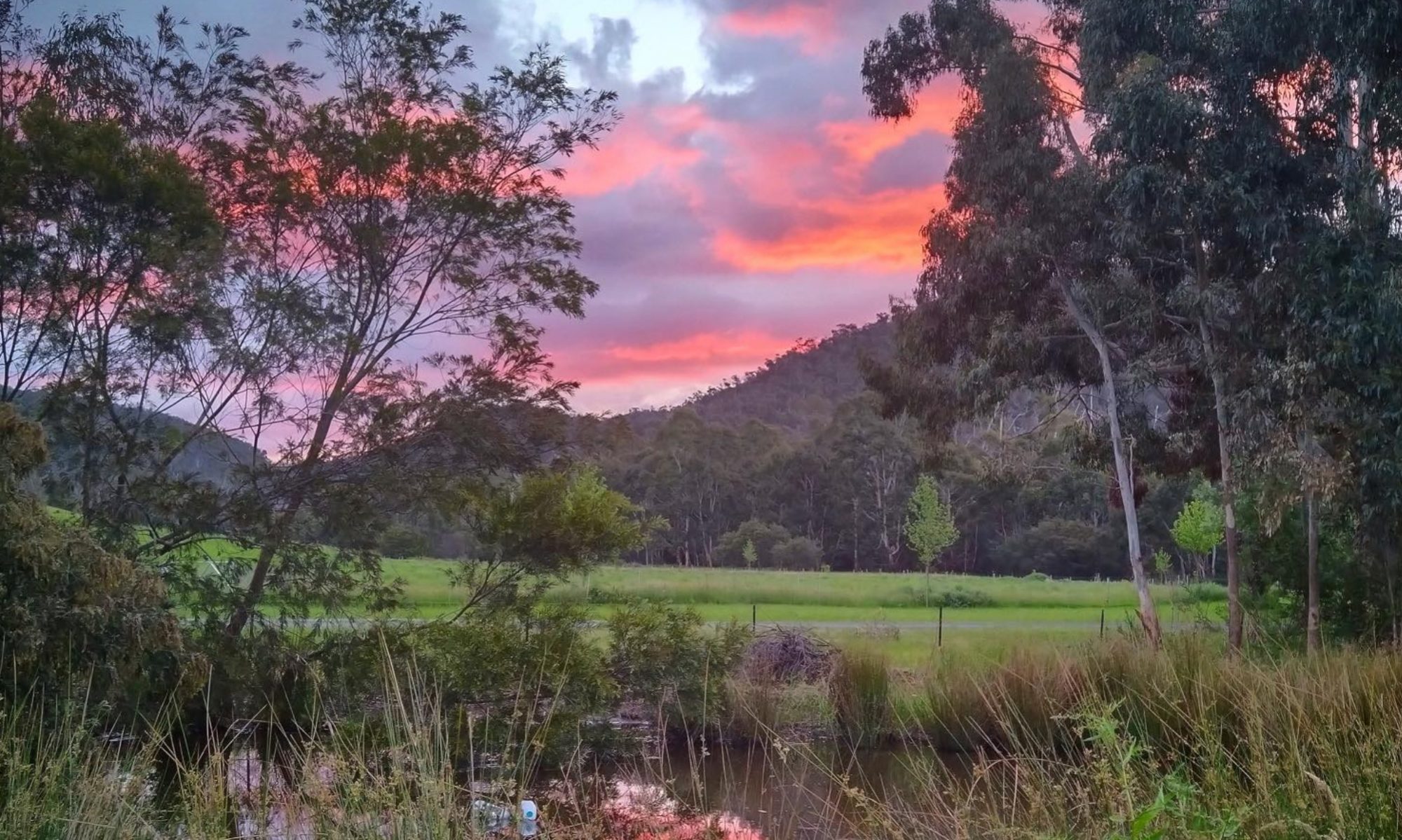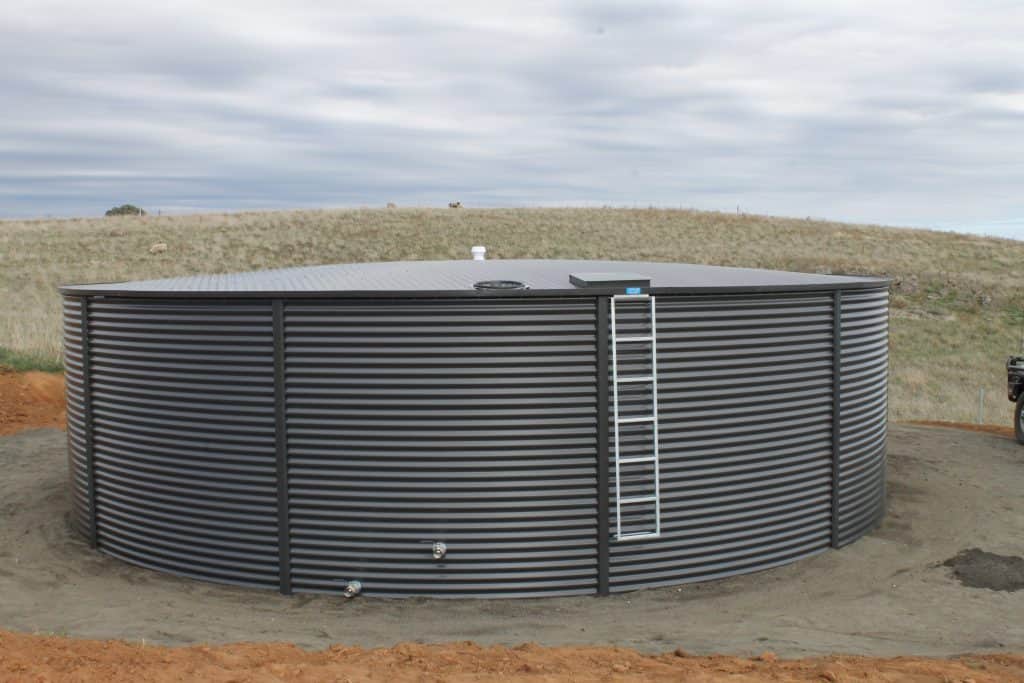Obviously, planning for bushfire is the sensible thing to do. Our land was burnt out in the Black Saturday fires, and we’re very well aware of the risks of living in the bush. There are things you can do to mitigate that risk; some of those things are yours to do by choice, but others are now mandated, either by Council or by the Building Code of Australia. We’ll address some of those things in future posts, but today has been all about the water tanks.
We’ve just finalised our choice of water tank. Whilst the sensible thing is obviously to harvest everything we can off all of our structures for use in the house and on the farm, we also need, by law, to set aside 20,000 litres of water which can only be accessed by the CFA for firefighting purposes. We could address this by having a separate tank, but we’ve decided to go for a 90,000 litre tank which incorporates an outlet and valve at the 20,000 litre point which can only be accessed by attaching a firehose. We’re going with a steel tank which also includes a gutter kit, so we can also harvest the rainwater that falls on the tank itself. How much water you may need to set aside will be determined by your location and the size of your land – your Council should be able to advise on this.
With rainfall patterns changing, and more extreme weather events on the increase, it’s important to plan to be able to harvest all of your rain, including on those days when you get 200mm in 2 hours! There are plenty of online calculators available which will allow you to calculate how much water you are likely to be able to collect – all you need to know is the square meterage of your roof, and your rainfall (which you can find out from the Bureau of Meterorology website.
Our tank will serve an additional purpose, in that we’re siting it so it blocks the western side of the house from the summer sun. We’ll also use it as a vertical growing surface, for heat tolerant vines, and to support a warmer microclimate for such follies as banana trees.

